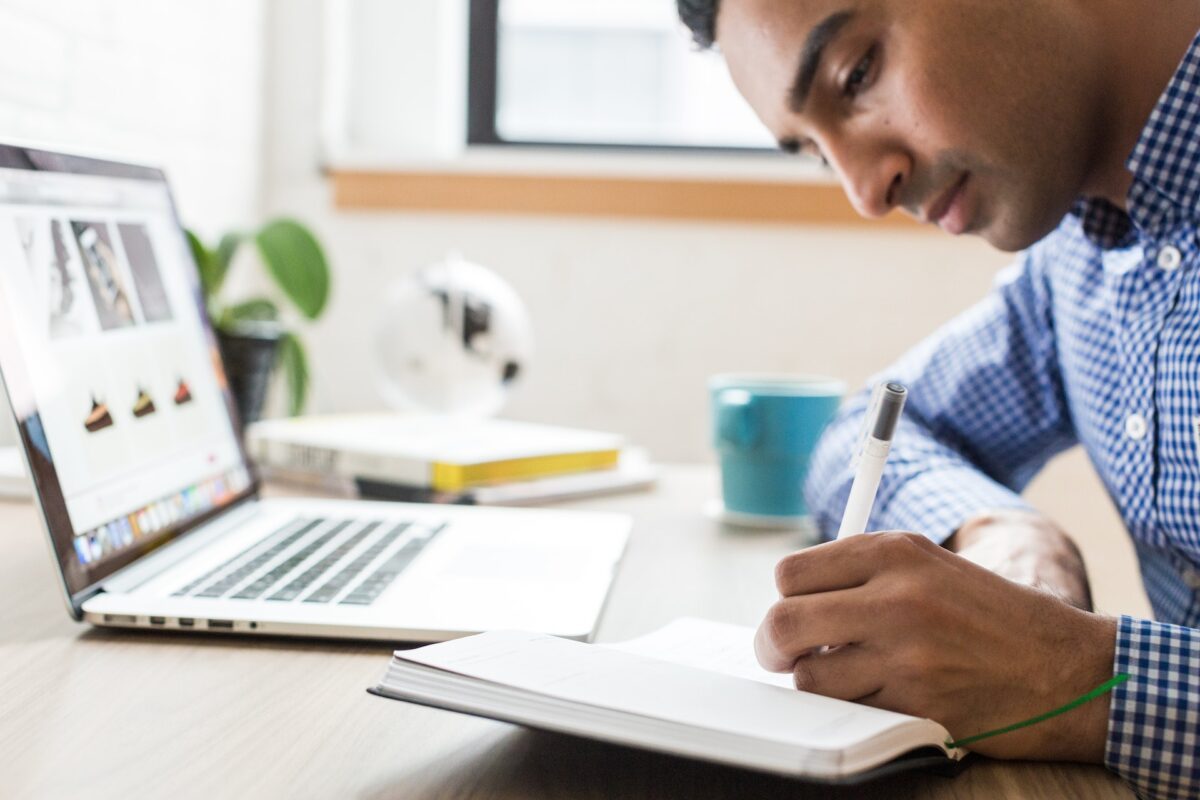Introduction
Here’s something you probably didn’t know.
Of all the content written on a webpage, roughly only 20% of that content is read by the user. Nowadays, users consume mostly images and videos, so when they consume text, they scan it and pick out the most important words.
However, not all users have the ability to scan through text seamlessly.
Roughly five to ten percent of Canadians live with Dyslexia, a disability that can be difficult to diagnose. Due to the different severity levels of Dyslexia, it’s essential to update your digital content so all users can easily consume that information.
What is Dyslexia?
Dyslexia is known as a hidden disability. It’s a neurodevelopmental condition that primarily affects a person’s ability to read, write, and spell easily. A well-known symptom of Dyslexia is the act of misreading or reversing letters in a word or sentence.
There are different forms of dyslexia people endure, which can affect their ability to read what’s on a webpage in various ways. For example:
- Surface dyslexia affects a person’s ability to recognize irregular words that don’t follow a typical phonetic pattern. For instance, the pronunciation of the letter “c” in “cat, car, and cause” all follow a phonetic pattern. However, this isn’t the case in words like “yacht, cello, and czar.” Nontypical phonetic patterns such as these affect the person’s ability to read words with unique spellings or pronunciations.
- Visual Dyslexia affects a person’s visual processing, making recognizing and distinguishing letters and words challenging. When visiting a webpage that lacks dyslexia-friendly fonts, disguised letters and words can create a frustrating experience as the person spends more time deciphering what’s written versus understanding the content.
How fonts help make your digital content accessible to dyslexic users
Because Dyslexia affects a person’s word and letter recognition, the type of font used on your webpage significantly impacts their ability to consume the content.
Choosing the right font plays an important role when creating and designing your webpage. Often creatives and designers will experiment with different fonts to create a more engaging and enticing copy. However, the impact these fonts have on dyslexic users is overlooked.
By incorporating accessible UX best practices and using dyslexia-friendly fonts in the design, users navigate the webpage more smoothly and with increased confidence. These changes:
- Help enhance the content’s legibility by creating a more apparent distinction between letters and words.
- Reduce the visual stress users often experience when dissecting what’s on the page.
- Clarify the content, as users can read more efficiently, improving comprehension.
- Allow the user to read quicker, thus paying more attention to important information.
- Improve the user’s engagement with the content, allowing them to better interact with it instead of stressing about the letters and words.
The top 10 dyslexia-friendly fonts to consider for your website and digital content
When discussing web accessibility, many people think of it as creating accessible content for visually impaired, hard of hearing, or mobility impaired users. However, a dyslexic person’s disability is often overlooked.
Choosing one of the best fonts for Dyslexia makes all the difference for someone trying to engage with the content. Therefore, you should incorporate one of the ten dyslexia-friendly fonts into your digital content to improve accessibility.
1. OpenDyslexic
OpenDyslexic is a widely known font created by Abelardo Gonzalez and explicitly designed for dyslexic readers.
The intention was to create a more user-friendly reading experience for dyslexic individuals, allowing them to read with less visual stress and improved comprehension. Many educators, websites, and content creators have used OpenDyslexic as part of their efforts to make digital content more accessible.
OpenDyslexic has distinct features that make it unique and helpful to dyslexic individuals, such as:
- Heavier weighted bottoms for letters that anchor them to the baseline. This reduces letter flipping or rotation, which is a common issue dyslexic readers experience.
- Wider spacing between the font’s characters. This allows more precise differentiation between letters and minimizes crowding effects.
2. Dyslexie
Dyslexia is another popular font designed for dyslexic individuals. Its unique letter shapes and increased spacing between characters are known to enhance readability.
The mastermind behind the Dyslexie font is Christian Boer, who also had difficulties with Dyslexia. What began as a college graduation project became an option of widely used fonts that help with Dyslexia.
Boer’s Dyslexie font has unique features that address challenges faced when reading, such as:
- Letter Differentiation: The font uses distinct letter shapes to minimize confusion between similar-looking letters like “b” and “d” or “p” and “q.”
- Weight and Spacing: The weight and spacing of letters is adjusted to provide a more apparent visual hierarchy. This makes it easier for dyslexic readers to recognize individual characters and words.
- Bottom Heavy Design: The base of each letter is slightly heavier than the top. A heavier base provides stability to prevent the letters from rotating or flipping.
3. Comic Sans
Even though it has a playful appearance, Comic Sans is preferred by some dyslexic readers to comprehend text because of its simple letterforms and clear distinction between characters.
Vincent Connare designed the Comic Sans font, which Microsoft released in 1994 and gained popularity as a standalone font. Next thing you know, it became one of the most widely used typefaces.
Comic Sans is known for being fun and informal since it’s a style commonly found in comic books. However, it’s also a great option for dyslexic users due to:
- Simple Letterforms: Comic Sans has clear and distinct letter shapes. Dyslexic readers can better recognize letters and distinguish between them, reducing reading errors.
- Ample Spacing: The font has generous spacing between letters, reducing visual crowding and minimizing characters blending together. Dyslexic readers often struggle with crowded text, and Comic Sans helps alleviate this issue.
- Readability at Different Sizes: Comic Sans remains legible at large and small sizes, offering flexible font usage across different digital content. The ability to adjust font sizes is a crucial accessibility feature that should be incorporated into every accessibility plan to improve readability.
- Assistive Technology Compatibility: Comic Sans is widely supported by assistive technologies like text-to-speech software and screen readers. This enhances accessibility for dyslexic individuals using these tools to access written content.
4. Arial
We’re all well aware of Arial, as most websites and digital content use this font. It has a simple letterform that makes it easy to read.
The font is also a valuable choice for dyslexic readers. It includes features such as:
- Uniform strokes, well-defined letter shapes, and ample spacing between characters. These qualities are crucial to reducing visual crowding.
- Clear differentiation between letters, such as “b,” “d,” “p,” and “q,” helps prevent confusion and aids in accurate letter recognition.
Arial’s straightforward and uncomplicated design allows dyslexic readers to focus on the content rather than getting distracted by elaborate or decorative letterforms, hence why Arial is a popular font overall.
5. Verdana
Similar to Arial, Verdana is a sans-serif font with ample spacing, making it more accessible for dyslexic readers thanks to its high legibility.
Verdana was designed for screen use, so it’s among the most utilized fonts for digital content. While it’s commonly used among non-disabled users, Verdana also benefits dyslexic readers thanks to:
- Clear and Large Letterforms: The font features clear and spacious letterforms, which make it easier for dyslexic readers to distinguish between letters and words. The font’s larger x-height (the height of lowercase letters) also improves readability by providing more surface area to recognize letter shapes.
- Ample Spacing: There is generous spacing between characters in Verdana. The ample spacing reduces visual crowding and prevents letters from blending while enhancing letter recognition.
- Wide Open Apertures: Verdana has wide open apertures, which are the openings in letters like “a,” “e,” and “s.” This openness helps distinguish similar-looking letters and improves overall legibility.
- Designed for Screen Use: Verdana was designed to be highly legible on screens and at small sizes. As dyslexic readers may prefer adjusting text size for optimal reading, Verdana maintains its readability and clarity across various dimensions.
6. Century Gothic
Century Gothic is often considered ideal for dyslexic readers due to its simplicity, clarity, and unique design.
While it may not be specifically designed for dyslexic individuals like some other fonts, its characteristics make it a good option for improving readability and reducing reading challenges.
Similar to Arial and Verdana, Century Gothic also offers:
- Ample spacing
- Consistent stroke width
- Simple letterforms
7. Trebuchet MS
Trebuchet MS is a font with rounded edges and generous spacing. These characteristics contribute to improved legibility for dyslexic readers by reducing visual distractions and enhancing readability.
It’s not explicitly marketed as a dyslexia-friendly font. However, its characteristics make it a good choice for improving the reading experience for individuals with Dyslexia. It’s actually quite comparable to Arial, Verdana, and Century Gothic.
8. Calibri
Chances are, you’ve seen or used the Calibri font, primarily if you frequently use Microsoft Office.
While it’s not targeted as a dyslexia-friendly font, it’s widely used, which brings a sense of familiarity. For dyslexic individuals who have adjusted to this font due to consistent exposure, its familiarity provides a more comfortable reading experience.
In addition, Calibri has a clean and straightforward letterform. The font’s simplicity reduces visual complexity, which can be helpful for individuals with Dyslexia who may struggle with more ornate or decorative fonts.
Overall, its consistency makes it easier for dyslexic readers to recognize and distinguish between letters and words.
9. Andika
Andika was explicitly designed to be more readable and accessible for dyslexic readers.
Created by the nonprofit SIL International, it incorporates several features that benefit dyslexic readers. Because the nonprofit focuses on language development and literacy, the Andika font was made to improve readability and letter differentiation and includes adjustable features to allow for a more accessible and enjoyable reading experience.
As one of the popular fonts that help with Dyslexia, its features include:
- Letter Differentiation: Similar to the Dyslexie font, Andika features clear and distinct letterforms, reducing confusion between letters that look alike, such as “b” and “d” or “p” and “q.” Dyslexic readers often struggle with letter reversal, and Andika’s design helps minimize these errors.
- Uniform Baseline: Andika maintains a consistent baseline, meaning the letters sit horizontally at the same level. This feature helps dyslexic readers follow text more smoothly, reducing the potential for skipping lines or losing their place.
- Clear Italics: Traditional italics pose challenges for some dyslexic readers. However, Andika’s italics are designed to be more legible and distinct, preventing them from blending into regular text.
- Designed with Dyslexic Users in Mind: Unlike many other fonts, Andika was explicitly created with dyslexic users in mind. Its features were chosen based on feedback from dyslexic readers during a study on Dyslexia. This feedback ensured that SIL International addressed specific reading challenges.
10. Sassoon Primary
Sassoon Primary was initially designed to help with early reading and writing development.
Rosemary Sassoon targeted young learners struggling with Dyslexia and incorporated a style that portrayed clear letterforms and larger spacing. However, the font isn’t limited to children or young learners. Thanks to its features, it’s also considered a favorable font amongst dyslexic readers.
Some of these features include:
- Consistent Letter Slope: The font maintains a consistent letter slope, providing a visual guide for dyslexic readers as they read across lines. A consistent slope helps prevent misalignment and improves the tracking of text. This helps reduce the risk of skipping lines while reading.
- Letter Clarity: Sassoon Primary has unambiguous letterforms, making it easier for dyslexic readers to recognize letters and differentiate between them. The font’s simple and legible design reduces the potential for letter confusion and reversals.
- Cursive Variants: Although cursive writing is taught less frequently, the cursive variants of this font aid in teaching handwriting to young learners. The font is designed with the same clarity and readability as the print letters, ensuring a smooth transition between print and cursive writing.
Improve your website and digital content accessibility with dyslexia-friendly fonts
Creating an accessible website or accessible digital content goes beyond updating technical features that aid screen readers or adding closed video captions. Actions as simple as changing the font significantly help disabled users with Dyslexia. It’s a tremendous game-changer in the digital realm as it makes web content more accessibe and more enjoyable for people with learning disabilities and dyslexia.
Remember, while it’s important to choose fonts accessible to dyslexic users, it’s not a one size fits all solution. Some fonts are more comfortable for users depending on the severity of their Dyslexia. Therefore, it’s all about testing the fonts and measuring which ones work best.
As you review your accessibility plan and update your digital content’s UX design to improve accessibility, remember to review the fonts to ensure dyslexic users can also engage with your content.
If you need help deciding which font to use, fill out the contact form below. Accessibility Partners offers free consultations, and we can discuss how to provide accessible content to all your users.







